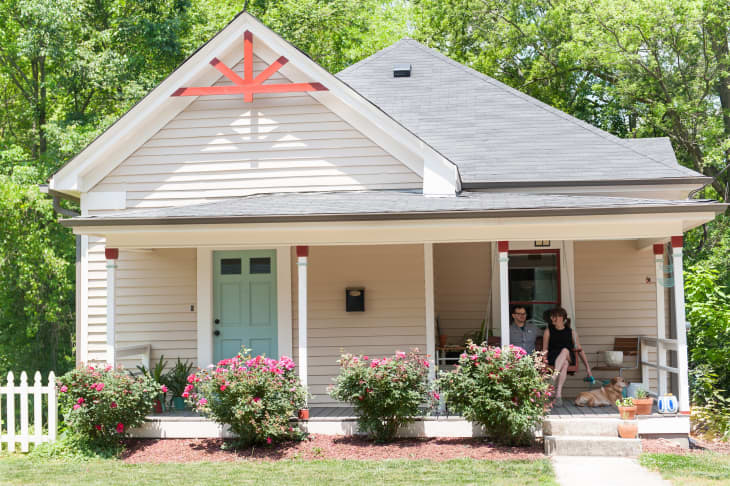They say you never get a second chance to make a first impression, and the saying holds true for homes. When your house is on the market, you want potential buyers to fall in love at first sight—and that means having major curb appeal.
While the house itself is the focus of curb appeal, keep in mind that landscaping is an important factor to consider as well. Thoughtful use of plants can create visual interest and enhance the overall look of your property. Here, three landscaping and real estate professionals share their advice for enhancing curb appeal with plants.
Add color with annuals
For a punch of color, you can’t beat annuals, says Frank Fitzgerald, a professional landscape architect and associate at Cuningham Group Architecture, Inc., in Minneapolis, Minnesota. “Each spring, you decide what this year’s colors will be. Keep in mind the colors of your house.”
A couple of his favorites are the Big and Whopper begonias, which come in pink and red flowers and green or bronze foliage.
Think in tiers
When planning, try dividing your landscaping into tiers with different heights for visual interest and organization, suggests Allan Hendricks, vice president of landscape architecture at Caulfield & Wheeler Inc. in Boca Raton, Florida.
The low tier should go in the front, include ground cover, and be about 1 feet high. The medium tier should go in the middle, include colorful plants, and be about 2 feet high. The high tier should go in the back, include hedge plants, and be about 3 feet high.
Try ornamental grasses
Fitzgerald recommends using ornamental grasses in your landscaping because the foliage and blossoms provide texture, he says. He particularly likes Calamagrostis Karl Foerster, which is easy to grow and readily available. “In mid-summer it sends up fluffy pinkish-red blossoms that slowly become golden,” he says.
Keep in mind that many ornamental grasses need full sun, so only use them if you’re planting them in a place that receives plenty of rays.
Create contrast
Color contrast and texture contrast are two elements that will add to the visual appeal of your landscaping, Hendricks says.
When it comes to color, green on green isn’t too exciting. But, when mixing colors, he suggests using cool colors with cool colors and hot colors with hot colors. “Can you mix them? Yes. Just be careful. Placing a yellow, orange, or red plant next to a cool pink or blue flowering plant is visually jarring and not harmonious. Just no.”
For texture, opposites attract. Try, for example, placing a round, dark, glossy leaf plant next to a soft, feathery, light green plant. “The bigger the contrast, the bigger the impact,” he notes.
Evergreens are… evergreen
Consider using evergreens since they stay green all year round, says Karen Kostiw, an agent with Warburg Realty.
Fitzgerald is partial to the Japanese Yew, an evergreen with soft, bright green needles. He notes that, unlike most evergreens, yews can grow in the shade.
Hydrangea provide drama
Looking to amp up the drama? Try the deciduous shrub hydrangea, which provides dramatic flowers and can become the focal point of your entry, Fitzgerald says. “There are a number of hydrangea on the market and new ones coming out every year.” He notes that the blossoms range in color from pristine white to pink to red to blue, and they also vary considerably in size.
Some of his favorite cultivars are Incrediball (large white blooms), Incrediball Blush (blush pink blooms), Limelight (greenish-white blossoms), Quick Fire (flowers emerge white and then turn deep pink), and Vanilla Strawberry (white flowers change to pink and then finish red).

Maintain order
While you want to be creative with your landscaping, keep things neat, Hendricks recommends. “Keep your design simple and orderly. Don’t get too artsy or loose with it. Simple, understandable design adds to your curb appeal aesthetic and doesn’t make people uneasy.”
Hải Yến
Gió bạn với cây tự buổi nào ,
Gió về cây lại ngất ngư chao .
Gió đi cây sẽ im lìm đứng,
Như kẻ lỡ làng dạ khát khao .
Hải Yến
Gió bạn với cây tự buổi nào , Gió về cây lại ngất ngư chao . Gió đi cây sẽ im lìm đứng, Như kẻ lỡ làng dạ khát khao .



